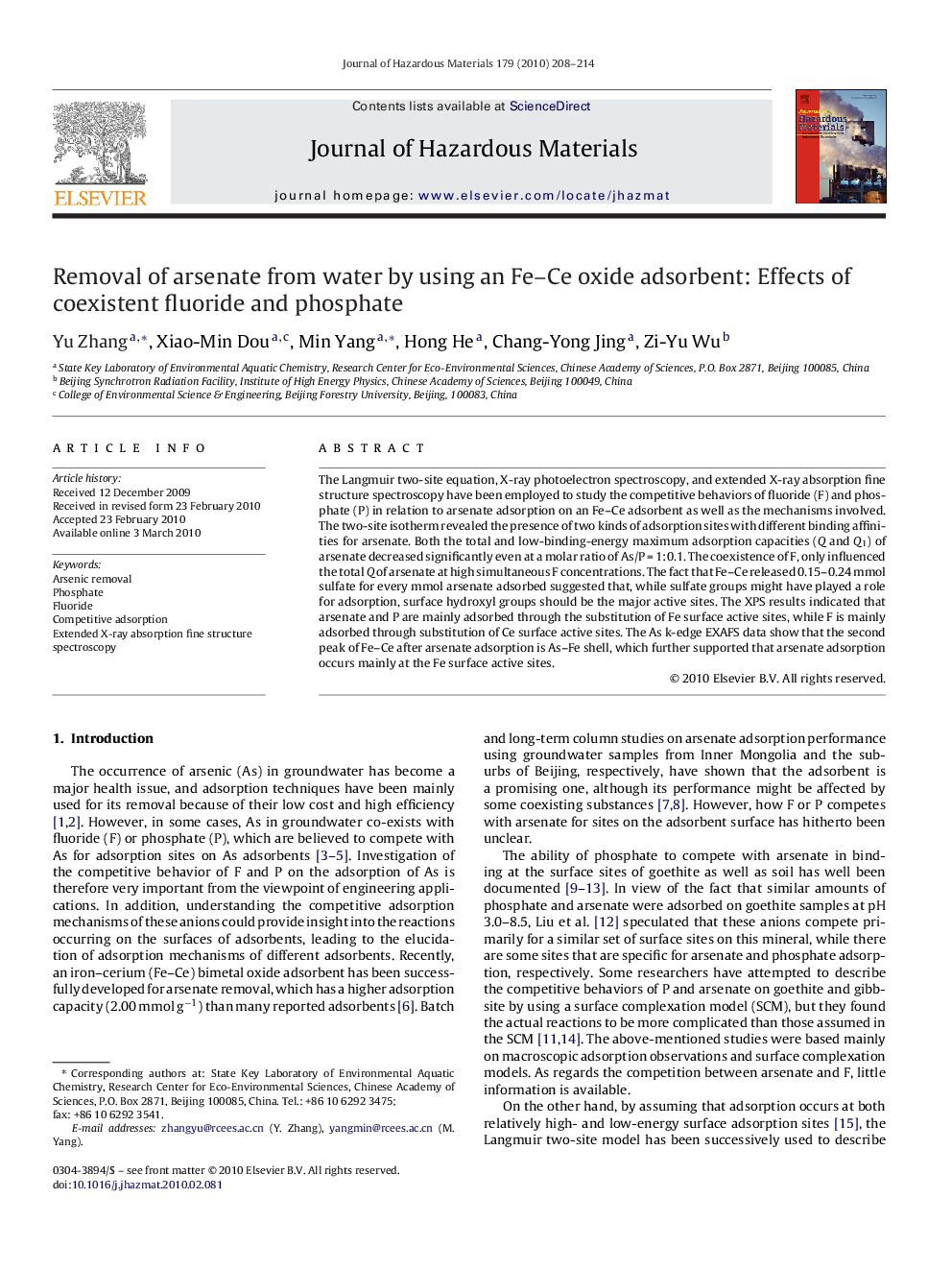| Article ID | Journal | Published Year | Pages | File Type |
|---|---|---|---|---|
| 580356 | Journal of Hazardous Materials | 2010 | 7 Pages |
Abstract
The Langmuir two-site equation, X-ray photoelectron spectroscopy, and extended X-ray absorption fine structure spectroscopy have been employed to study the competitive behaviors of fluoride (F) and phosphate (P) in relation to arsenate adsorption on an Fe-Ce adsorbent as well as the mechanisms involved. The two-site isotherm revealed the presence of two kinds of adsorption sites with different binding affinities for arsenate. Both the total and low-binding-energy maximum adsorption capacities (Q and Q1) of arsenate decreased significantly even at a molar ratio of As/PÂ =Â 1:0.1. The coexistence of F, only influenced the total Q of arsenate at high simultaneous F concentrations. The fact that Fe-Ce released 0.15-0.24Â mmol sulfate for every mmol arsenate adsorbed suggested that, while sulfate groups might have played a role for adsorption, surface hydroxyl groups should be the major active sites. The XPS results indicated that arsenate and P are mainly adsorbed through the substitution of Fe surface active sites, while F is mainly adsorbed through substitution of Ce surface active sites. The As k-edge EXAFS data show that the second peak of Fe-Ce after arsenate adsorption is As-Fe shell, which further supported that arsenate adsorption occurs mainly at the Fe surface active sites.
Keywords
Related Topics
Physical Sciences and Engineering
Chemical Engineering
Chemical Health and Safety
Authors
Yu Zhang, Xiao-Min Dou, Min Yang, Hong He, Chang-Yong Jing, Zi-Yu Wu,
